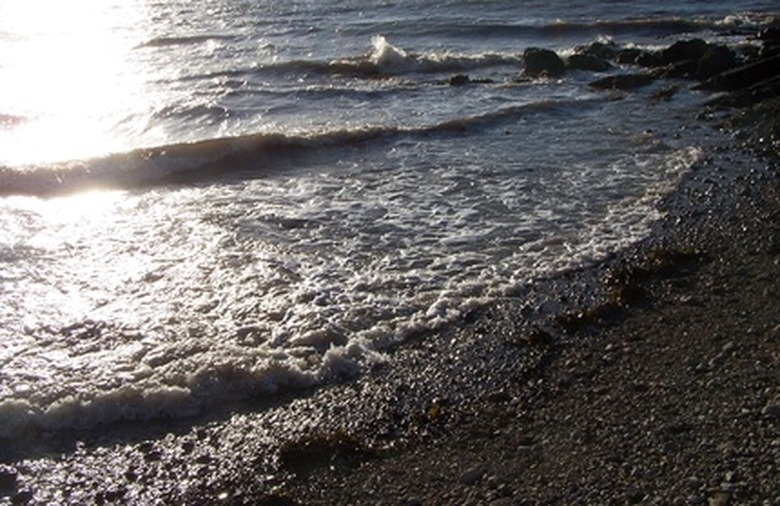Coastal Ecosystem Facts
A coastal ecosystem is an area where land and water come together. Coastal ecosystems provide habitat for a wide variety of marine plants and animals as well as provide resources and homes to humans around the world.
Coastal ecosystems have distinct and recognizable land forms such as beaches, cliffs and coral reefs which are highly vulnerable to disturbances.
Coastal regions represent some of the highest biodiversity areas on the planet. The Andaman and Nicobar Islands in the Indian Ocean are the location of a biodiversity hotspot.
The coral reefs there boast as many different species of marine living things as a tropical rainforest. Unfortunately, degradation of the coastline is leading to habitat destruction and irreversible damage to coastal communities.
Coastal Ecosystem Characteristics
Coastal Ecosystem Characteristics
Coastal ecosystems include highly biodiverse marine communities that vary depending on local topography and climate. Examples of coastal ecosystems include bays, estuaries, mangroves, salt marshes and wetlands.
Many fish, turtles and migratory birds nest in coastal areas because of the large amount of food and also because they are protected from some of the dangers of the deep ocean. These communities are very sensitive to disturbances caused by human activity, natural disasters and the introduction of invasive species.
The organisms that live in coastal areas are able to thrive because of the availability of sunlight and a sustained supply of nutrients. The shallow waters of coastal ecosystems allow sunlight to penetrate to the ocean floor where nutrients from dead organisms can collect and support life.
Sunlight can only penetrate to an ocean depth of 50 to 100 meters, therefore this type of nourishing environment is not present in the deep ocean where nutrients sink to depths that do not support most living organisms.
Formation of Coastal Landforms
Formation of Coastal Landforms
Coastal landforms are any features of the land that are present along the coastline. The differences in the shapes of coastal landforms result from geological processes including erosion and deposition. Other factors that affect the formation of coastal landforms include climate, weather, water (waves, tides, currents, etc.) and gravity.
Waves are a major cause of the erosion and deposition of coastal landforms. Small waves, for example, can pick up small sand particles and deposit them along the coast. During a storm large waves can move large rocks away from the coastline out to deeper water. Over time these forces change the shape of the coastline.
Coastal Region Facts
Coastal Region Facts
One of the important coastal region facts to know is that they provide the setting for many human activities like fishing, agriculture, textiles, recreation and tourism. Coastal cities are also home to millions of people and have been the focus of international travel for centuries.
Another fact about coastal regions is that their convenient location for travel and commerce also makes them a large source of environmental pollution. Industrial and agricultural pollutants travel into coastal waters by way of rivers. These pollutants have negative impacts on the fragile communities of species that thrive in coastal waters.
One example of this is eutrophication. Eutrophication is when algae productivity increases due to the addition of nitrogen and phosphorous into coastal waters. This creates algal blooms, which can kill native marine organisms by decreasing the supply of dissolved oxygen in the water.
Coastal Waters
Coastal Waters
Coastal waters are defined as the interface between land and water. Coastal waters begin at points of land on the coast and typically extend to the edge of the continental shelf about one nautical mile out to sea. This distance will vary depending on location and local structure of the ocean floor.
Coastal waters are made up of mixed salt and fresh water. Salinity, temperature and currents all play an important role in shaping the communities of organisms that are able to live in coastal waters. Coastal waters are also affected by weather patterns and tides.
Coastal Ocean Facts
Coastal Ocean Facts
One fact about coastal oceans is that coastal oceans are some of the most biologically productive ecosystems in the world.
Although coastal oceans make up 10 percent of the total ocean surface area, coastal oceans contain more than 50 percent of all _phytoplankton (microscopic plant-like organisms) that are present in the world's oceans. These phytoplankton then form the base of the food web for the rest of ocean life including zooplankton_ (microscopic animal-like organisms), fish and other animals.
This fact about coastal oceans means that coastal waters provide some of the best fishing grounds in the world. The amount of food available in the form of phytoplankton provides adequate resources for a variety of fish and other organisms to come to coastal waters to reproduce. Overfishing in coastal oceans has had negative effects on the health and biodiversity of coastal ecosystems.
Cite This Article
MLA
Reinbold, Joan. "Coastal Ecosystem Facts" sciencing.com, https://www.sciencing.com/coastal-ecosystem-7675093/. 22 November 2019.
APA
Reinbold, Joan. (2019, November 22). Coastal Ecosystem Facts. sciencing.com. Retrieved from https://www.sciencing.com/coastal-ecosystem-7675093/
Chicago
Reinbold, Joan. Coastal Ecosystem Facts last modified August 30, 2022. https://www.sciencing.com/coastal-ecosystem-7675093/
